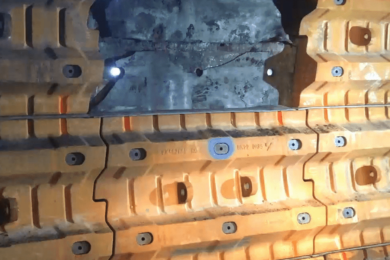The provincial budget delivered by Canadian Finance Minister Dwight Duncan last week in the Legislature has “made the future of mining in Ontario significantly brighter”, according to the Ontario Mining Association. It not only boosts the prospects of existing mineral producing operations but reduces economic resistance to new developments. The C$450 million Northern Industrial Electricity Rate Program (NIERP), the C$45 million new project based skills training program for Aboriginals and Northern Ontario residents, the appointment of a Ring of Fire Co-ordinator and the C$1.2 billion in infrastructure development to strengthen northern communities all represent positive commitments for the mineral sector.
“The budget begins to chart a course to a stronger economic future for the people of Ontario,” said Duncan. Several measures in the budget, which support statements in the Throne Speech of March 8, indicate that course will go through Northern Ontario and involve mineral production as a cornerstone.
“The budget clearly recognises the contributions mining makes to Ontario’s society and the role the industry can play in helping with Ontario’s economic recovery,” said OMA President, Chris Hodgson. “The budget is forward looking and helps protect existing jobs and investment while creating new opportunities related to the Ring of Fire area in the Far North, which holds potentially large deposits of chromite, nickel, copper and platinum.”
The NIERP will provide rebates of C$0.02/kwh, reducing electricity costs by around 25% from 2009 levels. OMA: “industry spends more than C$500 million annually in energy inputs. These rebates will be available to industrial facilities that commit to electricity efficiency and sustainability plans.
“The C$45 million over three years earmarked for training related to capacity building in the Ring of Fire area will benefit Aboriginals and Northern Ontarians. The Ring of Fire Co-ordinator will consult and work with Aboriginal peoples, Northern Ontarians and the mining community to encourage responsible and sustainable economic development in the region. The infrastructure support will upgrade roads, hospitals and water systems in the north.”
“For the 21st century, the discovery of chromite in the Ring of Fire could be as big as the discovery of nickel was in Sudbury in the 19th century,” said Duncan in his budget address.
Other commitments in the budget include the elimination of the Capital Tax on July 1, 2010 and a reduction in the Corporate Income Tax rate to 10% from 12% on income earned from manufacturing and processing and mining. The Harmonized Sales Tax, which also comes into effect on July 1, offers input tax credits and reimbursements.
“It is encouraging to see a budget which is strongly supportive of Ontario’s modern, high-tech, solution providing mining industry’s wealth and opportunity creating characteristics,” said Hodgson. Mining in Ontario is a C$10 billion business which provides Ontario with a C$3.3 billion trade surplus and more than C$600 million in corporate taxes annually. Around, 200,000 Ontarians are employed in the mineral industry cluster.








